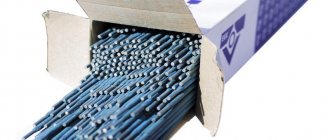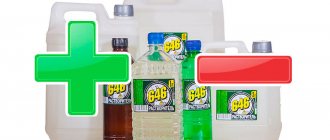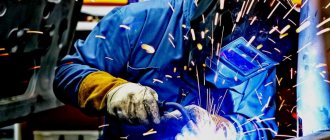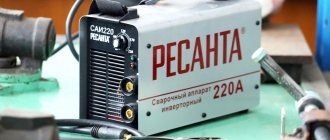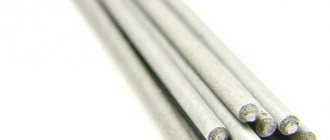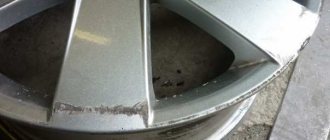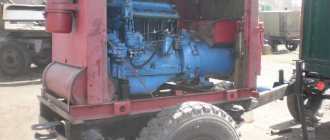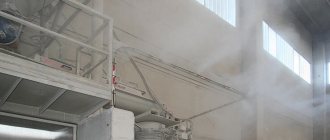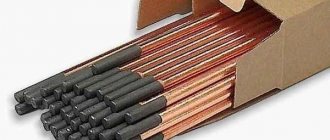Home / Electrodes
Back
Reading time: 3 min
0
6035
Welding machine users mainly use low-melting steel rod electrodes.
But for non-ferrous metals or U-shaped welds, a carbon rod is required.
You can use it to cook, cut and melt. It's time to learn about the benefits of this type of product.
- General information
- Scope of application
- Varieties
- Welding Features
- Results and conclusions
General information
What is such a welding electrode? This is a rod, its main component is coke coal. Its classic composition also includes other materials.
For example, metal powder, which makes the workpiece strong, resin is the unifying component. Its diameter (depending on the type) is 1.5-25 mm, and its length is 25-300 mm.
The production of a coal product is divided into three stages: at the first stage, a “mixture” of all materials is created, then the mixture is shaped, and at the end of production the rods are dried.
Scope of application
Most often, this consumable helps with air cutting of metals. Professional craftsmen who take on complex projects note that coal rods can be used to process various metals:
- Steels (carbon, low alloy);
- Non-ferrous metals (copper, aluminum, zinc);
- Light and heavy alloys (cast iron, tungsten and others).
When working with non-ferrous metals, a carbon rod will provide a reliable, neat connection. In the case of soldering with fusible rods, such a seam will not work.
Moreover, thanks to the carbon consumable, the process will be faster and easier. When processing bronze or cast iron, it is necessary to sharpen the end of the coal at an acute angle (approximately 60 degrees).
To increase the density of products, manufacturers spray a layer of copper powder on them. To save materials, this is done using an electrolytic lamp.
The coal billet along with copper powder is placed in a vessel with an electrolyte solution. There is an electrolytic field in the container, under the influence of which copper settles on the surface of the product.
Popular brands
Today, the production of graphite electrodes has gained wide demand; with such products you can carry out welding with your own hands. Let's look at what types of graphite rods exist:
- EG are graphitized materials that are produced from coal tar pitch and petroleum coke. Such products are used to work with a current density not higher than 25 A/cm². Some manufacturers produce them together with nipples. Graphite electrodes are often used for electric arc furnaces. The most popular brands are EG1 and EG2, the main difference of which is the resistivity.
graphite electrodes EG1
- EGS - for the production of such materials, stone pitch and needle coke are needed. Such graphite electrodes are used for electric arc furnaces, ore thermal structures and refining devices.
EGS electrodes
- EGP – impregnated cutting products. They are made from petroleum coke and coal tar pitch. In addition, to achieve a better welding effect, they are additionally impregnated with pitch. It gained wide popularity in the metal foundry industry, in ferroalloy furnaces and electric arc apparatuses.
EGP electrodes
- EGSP - in this case, the material consists of needle coke and pitch-impregnated coal tar pitch. Specific resistance is determined by the diameter of the product. There are such models as EGSP 1 and EGSP 2.
EGSP electrodes
On a note! P – impregnated (impregnation is often carried out with pitch); C – special (has an additional scope of application); G – graphitized; E – electrode.
Varieties
The range of diameters is quite wide.
Now the copper-plated electrode is presented in five different versions. Each modification has its own area of use. Carbon welding electrodes are:
- round (3.2-19 mm) – universal, for simple welding work;
- semicircular (diameter 10-19 mm) - they are used for cutting metal blanks;
- round endless - so called because during operation the material consumption will be minimal (compared to other types of electrodes);
- flat (diameter 8-25 mm) - such rods are square or rectangular in cross-section, and they are mainly used to correct defects on the steel surface;
- hollow (section 5-13 mm) - they are rarely used, but with the help of this type of electrodes you can form a characteristic U-shaped groove.
Preparatory work
Before you start working with the wires, you need to check again that there is no voltage on them.
For further work you will need a knife or special cutting tools, emery cloth, solvent, pliers or pliers, insulating tape or heat-shrinkable tubing. If heat-shrinkable tubing is used for insulation, it is very convenient to use a hair dryer, which gives a tight fit with the film.
To obtain a high-quality connection, preparatory work is carried out in the following sequence:
- Carefully remove a section of the insulating coating of at least 7 cm from the core for a core with a cross section of 1.5 mm² . If the wires are thicker, then for every 0.5 mm² of core diameter, reduce 5 mm of insulation. The cutting is carried out along the conductor with a knife or a special tool - a stripper;
- bare areas of the wire are cleaned with emery cloth;
- the surface of the conductors is degreased with acetone or white spirit;
- carefully, so as not to damage the wires, twist them into a flagellum with your hands or pliers , trying to ensure they fit snugly against each other;
- use wire cutters or mounting scissors to cut off the end of the harness to align the wires.
Welding Features
Some welders shared stories of how they used batteries as a source of charcoal without being able to buy a rod. Please note that this option is not suitable if you need a beautiful seam.
The carbon electrode has the property of not melting. This is its main difference from typical metal rods.
Working with it has some features: welding with this rod requires not alternating current, but direct current, the polarity of which is straight. The positive should be connected to the metal you are working with, and the negative should be connected directly to the electrode.
Some situations during welding require the use of a filler element. This situation could be, for example, flanging thin metal workpieces. Using an additive, you can make this procedure easier and more profitable.
You need to choose an additive taking into account the material with which you are working. When soldering copper, for example, bronze should be selected as a filler material.
It is worth paying attention to the shape and cross-sectional area of the filler wire (it can also be a plate).
Technology
Welding copper wires at home is possible with both alternating and direct current. Its voltage is 12-36 V. A mandatory requirement is the ability to regulate the current. The majority of welding inverters meet these requirements. But the best option is still a specialized model designed for electricians.
The power of such equipment for welding copper wires ranges from 1 to 1.5 kW. The power can be reduced to 30 or raised to 120 A. This technique is lighter than a standard inverter and is relatively compact. The edges of the welding cables are equipped with a special holder for carbon electrodes. However, when you already have a suitable standard inverter, there is no need to buy a special device.
Any powerful clamp can replace a standard electrode holder; you just need to insulate the handles.
In some cases, spot resistance welding is used (lasting no more than 2 seconds). Connecting household wires is possible using a simple 0.5 kW transformer. The voltage on the secondary winding should vary from 12 to 36 V. It is to this winding that the holder for the electrode and wires is connected. The optimal current value was experimentally determined:
- 2 cores of 1.5 sq. mm – 70 A;
- 3 cores of the same section - 80 A;
- 3-core cable 2.5 sq. mm – from 90 to 100 A.
A current of 100 to 120 A is needed to weld a four-core wire with a cross-section of 2.5 square meters. mm. But this rule does not always work. Each manufacturer can add its own special additives to the product in accordance with the recipe. This directly affects the thermal conductivity and electrical properties of the material. You can accurately select operating parameters by experimenting with cuts.
Results and conclusions
When working with a carbon electrode, there are two possible welding process options:
- right-handed - the welder moves the electrode from right to left, and immediately behind the rod there is an additive;
- left-handed - on the contrary, the electrode is moved from left to right, but the additive still follows it.
The right option is more efficient, taking into account the application of heat directly in the welding area. It is more convenient to weld parts with a large thickness using the right-hand method, and thin parts - using the left-hand method.
In addition, the speed of the “right-hand” work is approximately a quarter higher than the speed of the left-hand one. However, many welders often prefer the second method of work.
Carbon electrodes are generally used for working with copper and cutting metals. And thanks to their diversity, durability and convenience, they have found their use in the household.
Carbon gouging
Gouging is the removal of a narrow surface layer using carbon arc welding.
The word itself originates from the verb “to plan,” since this process is somewhat similar to the processing of grooves on a planing machine. Gouging technology is based on heating the metal with an electric arc to boiling temperature, followed by blowing it out of the weld pool with a narrowly directed air flow. Gouging is carried out to depths of up to tens of millimeters, and its productivity, depending on the thickness of the carbon electrode and the current strength, is measured in grams of metal removed per centimeter of groove. When performing gouging, the electrode is moved forward evenly at an angle of 30÷45°, forming a groove that is several millimeters wider and deeper than the diameter of the electrode. Planing is carried out with a special air-arc cutter, which has an established slang name “planer”. The contact plate with air supply nozzles is located on the lower jaw of the planer, so the air flow is directed along the bottom of the electrode towards the weld pool (see figure below). The air supply should stop a few seconds after breaking contact between the electrode and the metal.
Figure 6 - Air direction during welding
The use of welding with carbon electrodes for connecting electrical busbars made of copper and aluminum is regulated in detail by the instructions of Roselectromontazh I 1.08-08. But it doesn't say anything about welding wires. At the same time, there are quite a lot of photographs on the Internet demonstrating the use of such welding when installing electrical wiring in ordinary apartments and office premises. However, we have not yet been able to find even a mention of a regulatory document regulating such technology. If you know anything about this, please write a comment on this article.
